Fix Windows Modules Installer Worker High CPU Usage
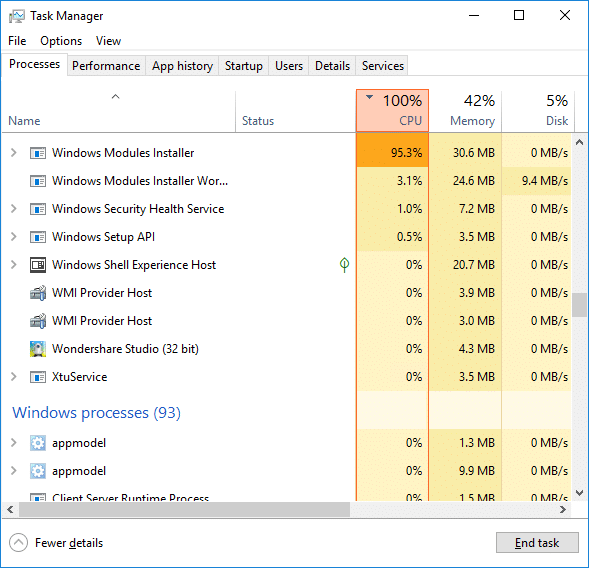
If you are facing the High CPU Usage by Windows Modules Installer Worker, then don’t worry as thousands of other users are also facing the similar problem and therefore, there are many working fixes which we will be discussing today in this article. To verify if you are facing this issue open Task Manager (Ctrl + Shift + Esc) and you will find that the Windows Modules Installer Worker is consuming High CPU or Disk Usage.

Pro Savjet: You may leave your PC overnight or for a few hours to see the issue rectify itself once the Windows is finished downloading and installing updates.
What is Windows Modules Installer worker (WMIW)?
Windows Modules Installer worker (WMIW) is a service which takes cares of automatically installing Windows Update. According to its service description, WMIW is a system process that enables automatic installation, modification, and removal of Windows updates and optional components.
This process is responsible for finding new Windows Update automatically and installing them. As you might be aware that Windows 10 automatically install newer builds (i.e. 1803 etc.) via Windows Updates, so this process is responsible for installing these updates in the background.
Although this process is called Windows Modules Installer worker (WMIW) and you will see the same name in the Processes tab in the Task Manager, but if you switch to Details tab, then you will find the name of the file as TiWorker.exe.
Why Is Windows Modules Installer worker Using So Much CPU?
As Windows Modules Installer worker (TiWorker.exe) runs continuously in the background, sometimes it might utilize high CPU or disk usage when installing or uninstalling Windows Updates. But if its constantly using high CPU then the Windows Modules Installer worker may have become unresponsive while checking new updates. As a result, you may be experiencing lags, or your system might hang or freeze completely.
The first thing users do when they experience freezing, or lagging issues on their system is to restart their PC, but I assure you that this strategy won’t work in this case. This is because the issue will not resolve by itself until and unless you fix the underlying cause.
Fix Windows Modules Installer Worker High CPU Usage
Obavezno kreirajte tačku vraćanja u slučaju da nešto krene po zlu.
Windows Modules Installer Worker (WMIW) is an important service, and it should not be disabled. WMIW or TiWorker.exe is not a virus or malware, and you cannot just delete this service from your PC. So without wasting any time let’s see How to Fix Windows Modules Installer Worker High CPU Usage uz pomoć dolje navedenog vodiča za rješavanje problema.
Metod 1: Pokrenite Windows Update Troubleshooter
1. Pritisnite tipku Windows + I da otvorite Postavke zatim kliknite na Ikona za ažuriranje i sigurnost.
![]()
2. Iz lijevog izbornika odaberite Rješavanje problema pod “Ustani i trči" kliknite na Windows Update.

3. Sada kliknite na “Pokrenite program za rešavanje problema” pod Windows Update.
4. Let the troubleshooter run, and it will automatically fix any issues found with Windows Update taking forever.
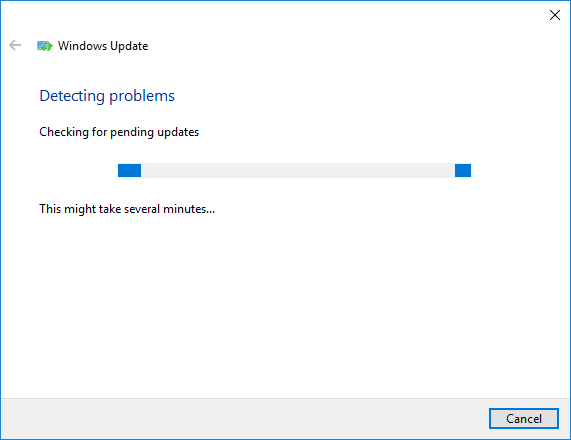
Method 2: Manually Check for Windows Updates
1. Pritisnite tipku Windows + I, a zatim odaberite Ažuriranje i sigurnost.
2. Sa lijeve strane klikne na meni Windows Update.
3. Sada kliknite na “Proverite ažuriranja” dugme da provjerite ima li dostupnih ažuriranja.

4. Ako su ažuriranja na čekanju, kliknite na Preuzmite i instalirajte ažuriranja.

5. Kada se ažuriranja preuzmu, instalirajte ih i vaš Windows će postati ažuran.
Method 3: Configure Windows Update to Manual
Oprez: This method will switch Windows Update from automatically installing the new updates to the manual. This means you have to manually check for Windows Update (weekly or monthly) to keep your PC secure. But follow this method, and you can again set the Updates to Automatic once the issue is resolved.
1. Pritisnite tipku Windows + R, a zatim otkucajte services.msc i pritisnite Enter.

2. Scroll down and find Instalater Windows modula service in the list.
3. Desni klik na Usluga Windows Modules Installer i izaberite Properties.
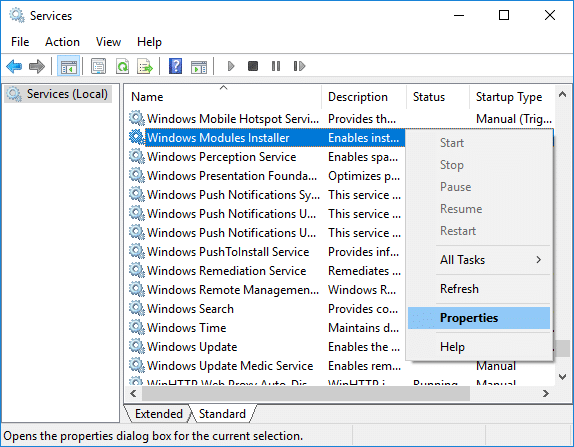
4. Sada kliknite na Stop then from the Tip pokretanja drop-down select Priručnik.
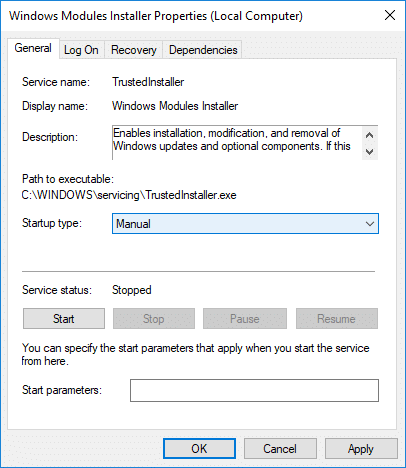
5. Kliknite na Apply, a zatim na OK.
6. Similarly, follow the same step for the Windows Update service.

7. Ponovo pokrenite računar da biste sačuvali promene.
8. Opet provjeriti Windows Updates Manually i instalirajte sva ažuriranja na čekanju.
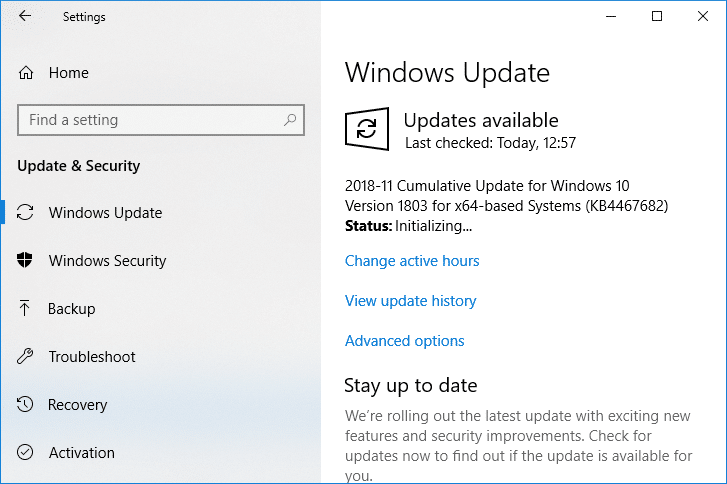
9. Once is done, again go back to services.msc window and open the Windows Modules Installer & Windows Update Properties prozor.
10. Podesite Tip pokretanja to automatski i kliknite start. Then click Apply followed by OK.
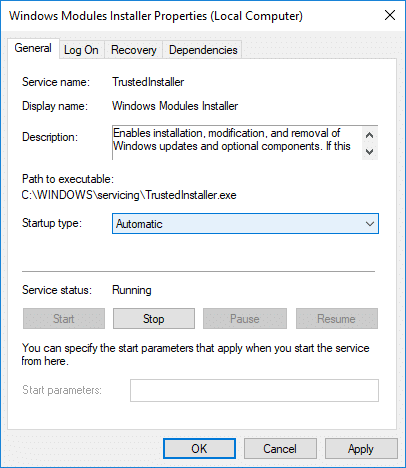
11. Ponovo pokrenite računar da biste sačuvali promene.
Metoda 4: Pokrenite alatku za rješavanje problema održavanja sistema
1. Pritisnite tipku Windows + R, zatim otkucajte control i pritisnite Enter da otvorite Kontrolna tabla.

2. Pretražite Troubleshoot i kliknite na Rješavanje problema.

3. Zatim kliknite na Vidi sve u levom oknu.
4. Kliknite na “System Maintenance” pokrenuti System Maintenance Troubleshooter.

5. Alat za rješavanje problema možda može Fix Windows Modules Installer Worker High CPU Usage, but if it didn’t, then you need to run System Performance Troubleshooter.
6. Otvorite komandnu liniju. Korisnik može izvršiti ovaj korak traženjem 'cmd' i zatim pritisnite Enter.

7. Unesite sljedeću naredbu u cmd i pritisnite Enter:
msdt.exe / id PerformanceDijagnostički
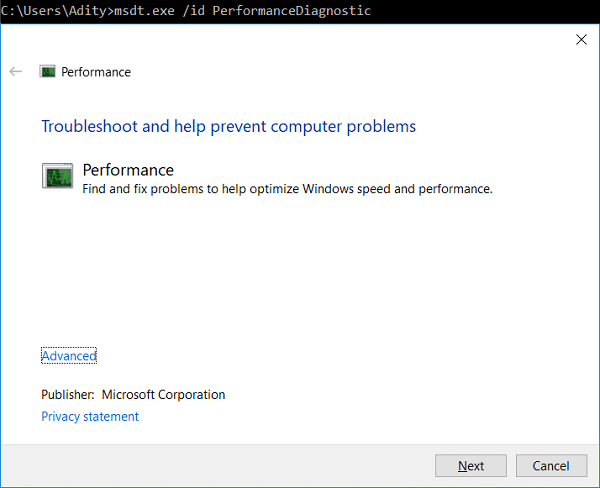
8. Follow the on-screen instruction to run the troubleshooter and fix any issues find the System.
9. Finally, exit the cmd and reboot your PC.
Method 5: Disable Automatic Maintenance
Sometimes Automatic Maintenance can conflict with the Windows Modules Installer Worker service, so try to disable Automatic Maintenance using this guide and see if this fixes your issue.
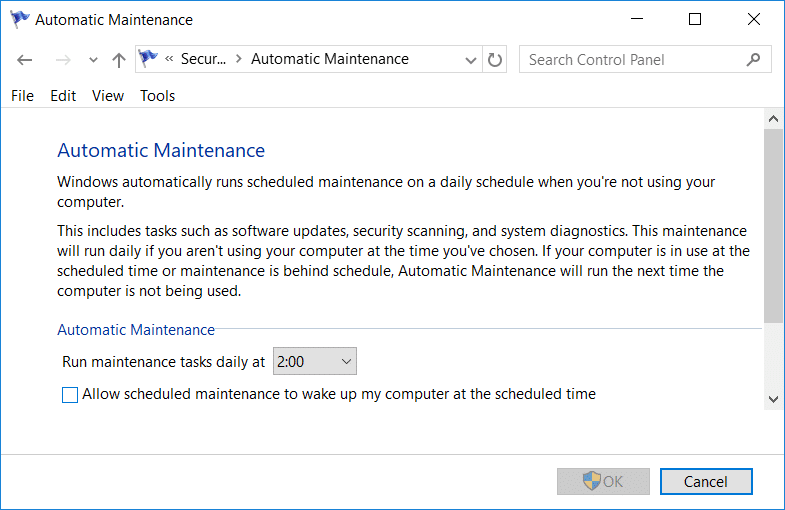
Although disabling Automatic Maintenance is not a good idea, but there might be some case where you need to actually disable it, for example, if your PC freezes during automatic maintenance or Windows Modules Installer Worker High CPU Usage issue then you should disable maintenance to troubleshoot the issue.
Method 6: Run System File Checker and DISM
1. Otvorite komandnu liniju. Korisnik može izvršiti ovaj korak traženjem 'cmd' i zatim pritisnite Enter.
2. Sada upišite sljedeće u cmd i pritisnite enter:
Sfc /scannow sfc /scannow /offbootdir=c: /offwindir=c:windows (Ako gore ne uspije, pokušajte s ovim)

3. Sačekajte da se gornji proces završi i kada završite, ponovo pokrenite računar.
4. Ponovo otvorite cmd i upišite sljedeću naredbu i pritisnite enter nakon svake:
Dism /Online /Cleanup-Image /CheckHealth Dism /Online /Cleanup-Image /ScanHealth Dism /Online /Cleanup-Image /RestoreHealth

5. Pustite DISM naredbu da se pokrene i pričekajte da se završi.
6. Ako gornja naredba ne radi, pokušajte na sljedećem:
Dism /Image:C:offline /Cleanup-Image /RestoreHealth /Izvor:c:testmountwindows Dism /Online /Cleanup-Image /RestoreHealth /Izvor:c:testmountwindows /LimitAccess
Bilješka: Zamijenite C:RepairSourceWindows izvorom popravke (Windows instalacijski disk ili disk za oporavak).
7. Ponovo pokrenite računar da sačuvate promene i vidite da li ste u mogućnosti Fix Windows Modules Installer Worker High CPU Usage.
Metoda 7: Izvršite čisto pokretanje
Sometimes 3rd party software can conflict with Windows and can cause the issue. To Fix Windows Modules Installer Worker High CPU Usage issue, potrebno je da izvršite čisto pokretanje računara i da dijagnostikujete problem korak po korak.
Method 8: Set your WiFi as Metered Connection
Bilješka: This will stop Windows Automatic Update, and you will need to manually check for Updates.
1. Pritisnite tipku Windows + I da otvorite Postavke zatim kliknite na Mreža i Internet.

2. Iz lijevog izbornika odaberite Wi-Fi.
3. Under Wi-Fi, klik on your currently connected network (WiFi).
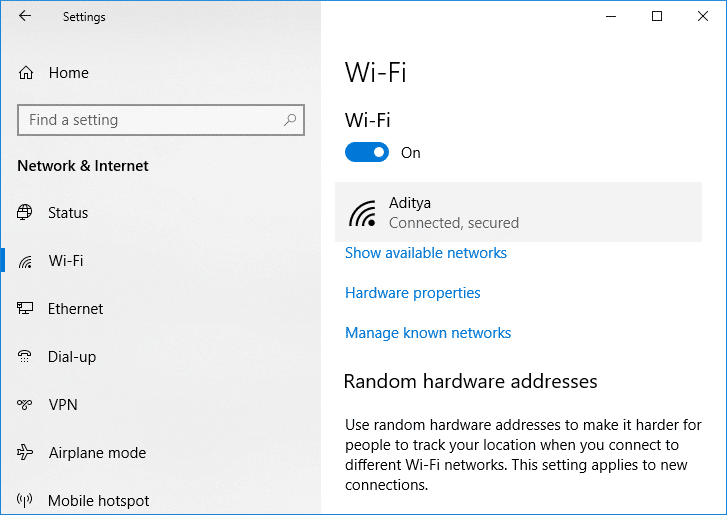
4. Scroll down to Metered connection and omogućite prekidač pod “Podesite kao mereno povezivanje".
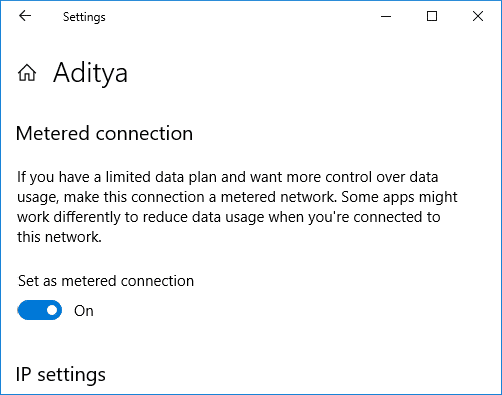
5. Close Settings and reboot your PC to save changes.
Preporučena:
To je to, uspješno ste Fix Windows Modules Installer Worker High CPU Usage ali ako još uvijek imate bilo kakvih pitanja u vezi sa ovim vodičem, slobodno ih pitajte u odjeljku za komentare.
